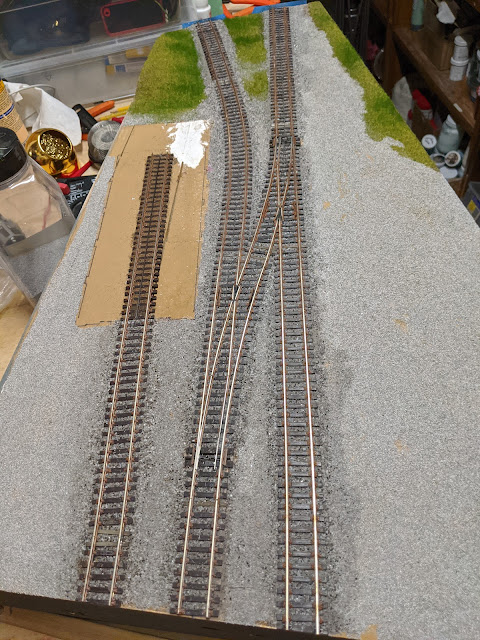When mounting a camera on a flat car for layout videos or remote operators, a common approach is to set the camera close to the front of the flat car, since we want to give the illusion of being in a locomotive cab. Seeing the front of the flat car destroys that illusion.
However, doing this has an unfortunate side-effect: Depending on the length of the flat car used viewers now complain that they can't see as much of the scenery along the track as they had hoped. Especially in tighter curves there is a distinct lack of scenery visible on the inside of the curve.
The camera doesn't "look around the corner".
Part of the reason for this is basic geometry: The car rides on a curve. The center of the camera view is on a tangent off the center of the curved track. Hence, the center line of the camera image and the center line of the track diverge. The tighter the curve, the larger the divergence, the more scenery on the outside of the curve is taking up screen real estate on the inner side of the camera view.
An additional factor is the length of the flat car. The longer the car, the more the ends of the car hang to the outside of the track center line, making the natural tangent effect worse.
The effect is demonstrated by the car in the middle above. The teal triangle simulates the view of a camera mounted at the very front of the car looking straight ahead. Barely anything to the right of the track is is visible to the camera, while plenty of scenery to the left of the track can be admired.
There are multiple ways to even this out:
- Mount the camera in or near the front, but use a short flat car: By reducing the overhang at the end of the car, the camera's lens is positioned closer to the tangent off the track center line. Positioning the camera above the center of the front truck, or front axle, minimizes the overhang.
- Using a long flat car, mount the camera in the middle of the car: Long cars have an overhang to the outside of the curve at the car ends, and an overhang to the inside of the curve in the middle of the car. We can use the middle overhang to move the center line of the camera to the inside of the curved track center line and pick up more visibility.
- Using a long flat car, mount the camera in the rear of the car: Moving the camera further towards the rear of the car creates a "steering effect" where the front truck is "turning the car deck into the curve." In this setup the camera center line is not on a tangent off the curve, but on a chord. Hence the camera view captures much more of the scenery to the inside of the curve as demonstrated by the car on the right in the image above.
- Using a wide-angle or fish-eye camera lens can help as well, but results in distortions along the edges of the image.
Using a single long flat car is convenient, since it has plenty of space for the camera and supporting gear like batteries.
If too much of the front half of the car is visible in the resulting video, in many cases cropping the video can hide the car deck. If that's not possible or insufficient, push the camera lens forward until the car deck is no longer visible. This will still produce a better video experience than mounting the camera at the very front of the car. Alternatively, use two flat cars. The front car holds the camera pushed as far to the rear as possible, and the second flat car holds the support gear.


















































